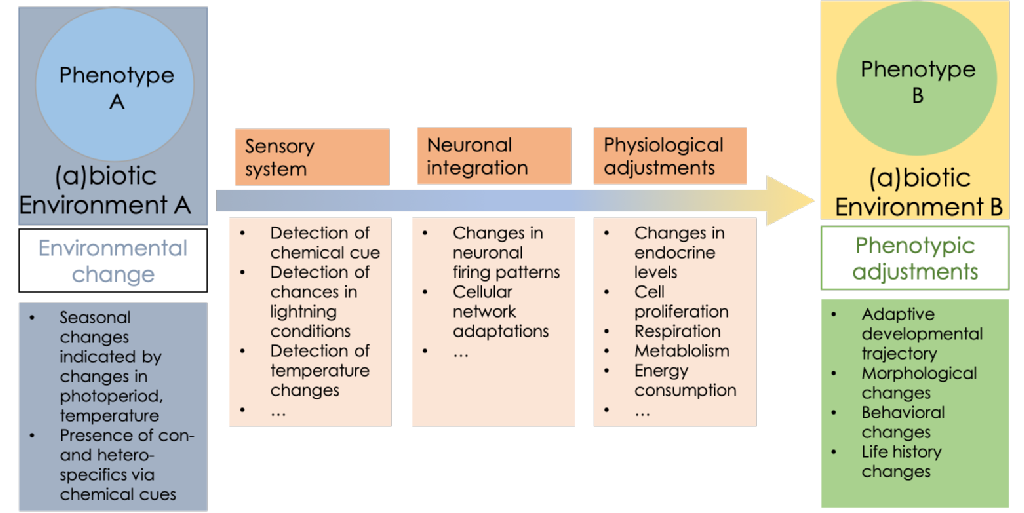Central Objective
(Prof. Dr. L. Weiss)
The term phenotypic plasticity describes the ability of an organism to respond to changing environmental conditions by the adaptation of its phenotype. Thereby, organisms can conquer environments with fluctuating conditions as their genotype is geared with adaptive strategies increasing the individual's fitness.
From an ecological and evolutionary perspective, phenotypic plasticity is a powerful and widespread mean of adaptation with which environmental challenges can be accomplished. Phenotypic plasticity has been especially-well studied in freshwater crustaceans of the genus Daphnia. They react highly plastic to a wide variety of environmental cues, by developing adaptive context-dependent phenotypes. In one example, Daphnia develops defensive morphological features upon the presence of their predator. The defended Daphnia are better protected against their predators and thereby increase survival chances. This directly affects population fitness and is relevant for ecosystem functioning.
In another example, Daphnia reacts to crowding and food limitation and shift from parthenogenetic to sexual reproduction. Sexually produced embryos are encapsulated in a protective shell, sink to the lake bottom where they remain in a state of innate dormancy. Like this they seek temporal refuge and arrest for months up to many years (~80 years) until being resurrected by exogenous stimuli. Entrance into a state of reversible dormancy requires organismal, cellular and molecular adaptation at severely reduced energy flows. At the same time, explicit pathways must be functional and ensure the perception of environmental cues that predict the stabilization of environmental factors. In turn this will initiate the revival of the organism and the reuptake of developmental progression.

|